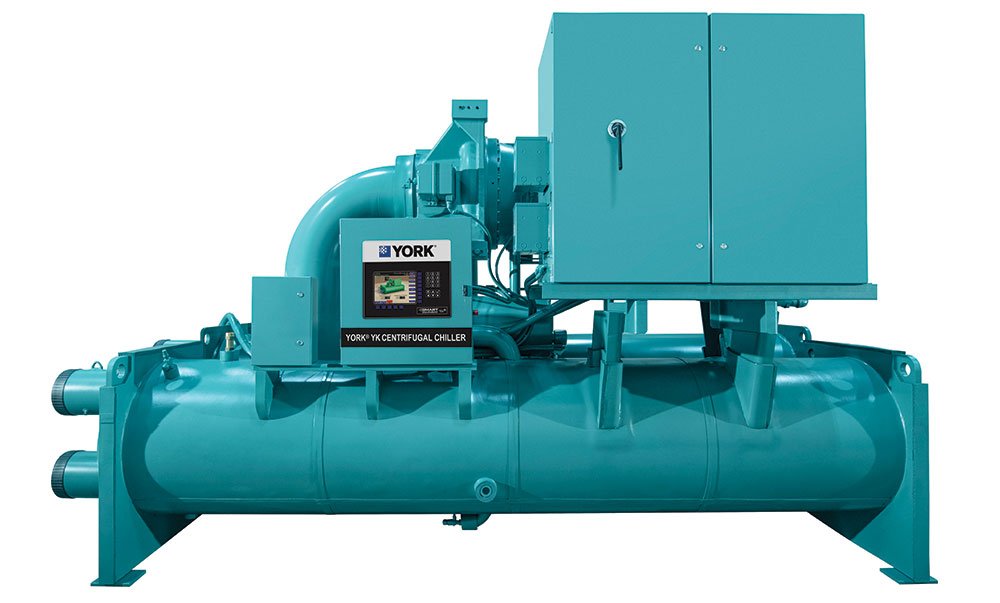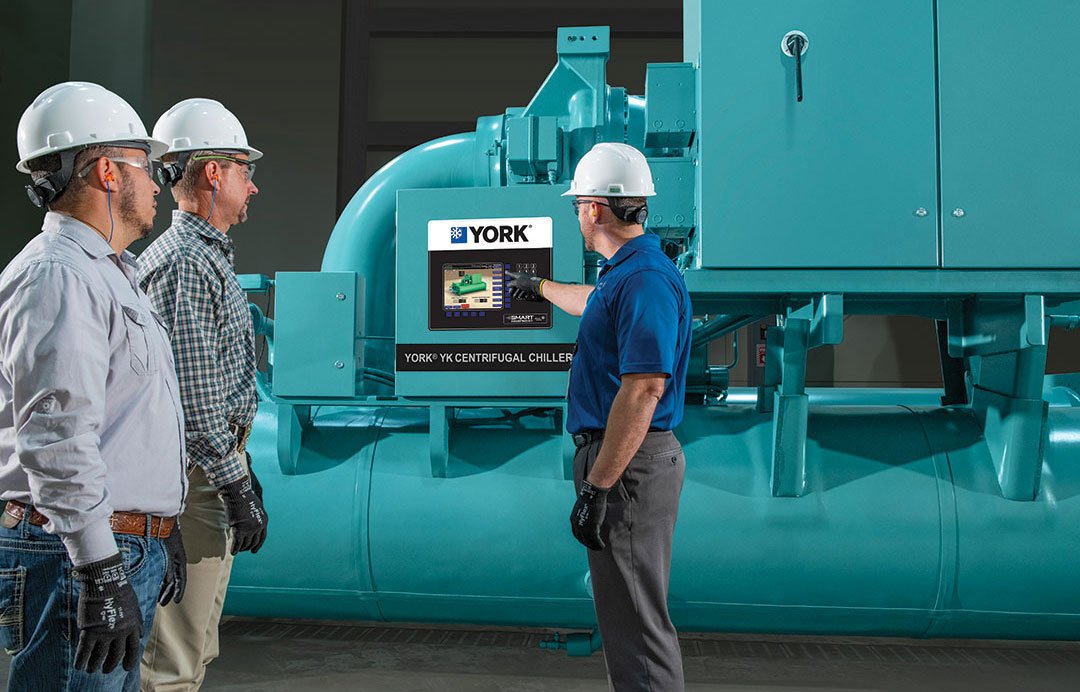As we’ve said in many of our InterTech blog posts, every plant and project is unique. As with all the equipment in your facility, there’s not a one-size-fits-all method for choosing the best solution and that certainly applies to the chilled water system.
Since there are specific requirements for every operation, in this article, we are going to talk about our general approach to the process. We’ve followed this method for over three decades, and it has resulted in operational savings as well as better operational control for our clients.
Thank you to Ben Edwards, InterTech Project Manager and Engineer, for providing the details for this article. We hope this information points you in the right direction.

Collect the Data
Before we can determine the best chilled water system for you, it’s important to answer some questions. By collecting all the necessary data on the front end, we can predict a high level of success on the back end.
These questions include:
- What are the short-term, mid-term and long-term goals for your facility?
- What are your production requirements?
- What equipment do you plan to add throughout the facility?
- What are your capital restrictions?
- How will you run your typical day-to-day operation?
- And more
At InterTech, your success is our first priority. With that in mind, for new projects, the first step is often to determine whether or not the goals of the project can meet the financial return to justify it. Our expertise shines when we are able to capture hidden costs in our calculations.
The resulting data will provide you with the information you need to make the best decision for your business. You can learn more about this report on the Project Feasibility page of our website.
For projects working within an existing facility, we always start with evaluating your existing system to determine the best approach. We utilize owned assets to reduce the capital expenditure required to implement a project. We prepare a system summary report that defines areas of inadequacy, and we make a plan to upgrade with minimal plant operation interruption.
Using a holistic plant approach, this proprietary report will not only determine the operational effectiveness of your existing systems (such as your chilled water system), but also the financial requirements based on your goals and expectations.
Start Making Some Decisions
Once you have the data to determine the project requirements for your project, it’s time to start making some decisions. Let’s look at the supporting chilled water system that will provide cold water throughout your facility. Typically, a chilled water system supplies water at temperatures ranging from 40 to 60 degrees Fahrenheit.
Much of your chilled water system design will depend on how you run your typical operation. For example, will you run one line on and off? Will you run multiple lines all the time? Will you see one production line running today and perhaps four lines running tomorrow? There are several variables to consider.

The Two Most Common Chilled Water System Approaches
There are two primary approaches for chilled water systems that we typically install. Of course, there are variations of these which are sometimes necessary, but for this article, let’s focus on the two most common systems we design and install.
The first type is a 100% primary system, which is what we call a high pressure primary loop. It provides water to your blow molding, injection molding and process equipment that typically require high pressure to push the water through the molds and other heat exchangers. This system will also provide water to other requirements such as any environmental conditioning coils.
The second type of chilled water system is a primary/secondary system. It provides a low pressure primary loop, which provides water to all low pressure differential loads as well as to secondary booster and temperature regulating circuits.
There are many advantages to the primary/secondary system – reduced energy by only raising pressure (which requires horsepower) for the loads that require it, better temperature control and better process control just to name a few.
When we focus on the specific requirements for the chilled water system (both the primary and secondary loop requirements), we can implement tight process controls for parameters such as flow, pressure and temperature throughout the plant.
Which Chilled Water System is Best for You?
Working with our clients, we help them choose which chilled water system design is best based on our review, their operational plan and long term growth model, the initial capital requirements and the return on their investments based upon the savings available.
Another consideration that helps us determine the best type of system design is how tight the controls need to be for your specific processes. For example, the primary/secondary system gives you a tighter tolerance on the water temperature going into your blow molder.
That tighter tolerance allows you to have a higher repeatable production steady-state water system. You won’t see swings in your water temperature going into your mold, so you’ll be less likely to see process changes within your production machine as a result of the water system.
That’s not to say that a primary-only system won’t do that, but that’s what the primary/secondary system is designed to do. It gives you that tighter tolerance.
The primary/secondary system requires an additional (second) pump, and an additional control loop. For those installations, we add another control point between the primary system and the machine.
Ultimately, it’s no more difficult to design and install a primary/secondary system in comparison to a primary-only system, but the primary/secondary system provides more opportunities for success.

How Does InterTech Provide Value for Chilled Water Systems?
Although we have a high level of expertise in many industries – for decades (and over 1,500 projects) – we’ve focused on industrial manufacturing.
We have seen many designs for industrial manufacturing systems that use the same design principles and practices of a traditional HVAC system, which may not address all the intricacies of an industrial system design. We would agree that heat rejection is heat rejection, but industrial manufacturing heat rejection has some additional factors that must be considered.
Over the past three decades, we’ve put together standard chilled water system design principles and practices that we employ on every project to ensure we don’t miss things that others often miss.
For example, on a recent project, our client told us that our competitor’s report didn’t include many loads in other areas of the facility. We included those loads in our report because our best practices look at the end-to-end processes. We take a total plant and system approach and consider how all the parts and pieces work together to meet your overall goals. We look at all the details.
That’s how we provide (and prove) our value to our clients. We look at things differently because of our expertise in the manufacturing sector. If you would like to continue this conversation, please give us a call at 770.431.5959 or complete the blue “Ask An Engineer” form on the right. We’d love the opportunity to be of service to you.
(Chiller images reproduced courtesy of Johnson Controls)

For over 35 years, InterTech has helped hundreds of food and beverage plants implement a variety of manufacturing projects. Whether it be a single line or multi-plant roll out, we have helped reduce their operating costs by $2-10 million per year.
Let us model your operations and show you the feasibility of your project ideas. The earlier we get involved, the more money we can help you save.
For multi-plant clients, we have helped develop long-term plans to capitalize on the savings of initial projects in order to support future projects whose returns are lower.
We also develop Requests for Information (RFIs) or Requests for Proposals (RFPs) for major equipment so our clients can be assured they are getting the correct equipment at the best value. By assembling all of the information we receive into a Total Cost of Ownership, we can forecast operational costs for the long-term and establish budgets for plants that have not previously been self-manufacturing their bottles.
Our clients include Cargill, AAK, Constellation, Ghirardelli, and both Coca Cola and Pepsi Cola (and their respective bottlers) and many others. We invite you to view a more complete list of our esteemed past and current clients.
Working with InterTech’s experienced engineering staff will help you make informed decisions and avoid costly changes.
InterTech
120 Interstate North Parkway SE
Suite 102
Atlanta, GA 30339
770-431-5959


0 Comments